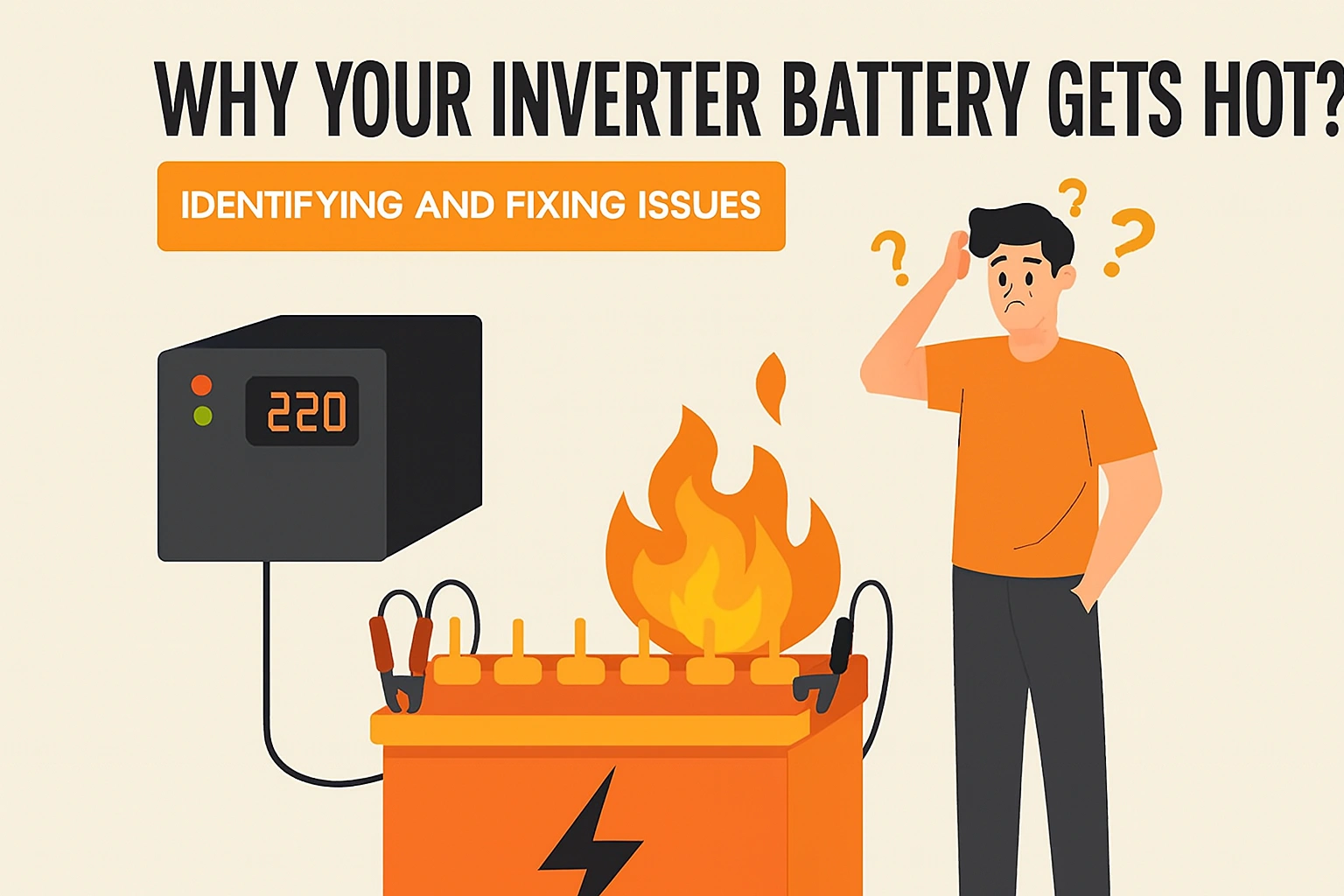
Why Your Inverter Battery Gets Hot: Identifying and Fixing Issues
05 December 2025
Inverter batteries, whether tubular, lithium-ion, or lead-acid types, are designed to handle a certain load efficiently. However, when they start heating up excessively, it’s a clear sign that something in your system needs attention. As someone who has worked extensively with solar products manufacturers, tubular battery manufacturers, and online UPS manufacturers, I’ve seen many users overlook subtle warning signs that lead to premature battery failure.
Understanding the Basics of Battery Heating
Before diving into causes, it’s important to understand why batteries heat up. In simple terms, batteries generate heat when:
-
Electrical energy is converted to chemical energy during charging and discharging.
-
The internal resistance of the battery increases, causing energy loss in the form of heat.
Some heating is normal, especially during charging or heavy usage, but persistent or excessive heat is a warning sign.
Common Causes of Inverter Battery Overheating
1. Overloading the Inverter
One of the most frequent causes of a hot battery is running appliances beyond the inverter’s capacity. Each inverter is designed to handle a maximum load, and exceeding this:
-
Forces the battery to supply more current than it’s rated for
-
Generates excessive heat due to increased internal resistance
To prevent this, always calculate your total load and ensure it matches the inverter’s capacity.
2. Faulty or Poor-Quality Batteries
Not all batteries are created equal. Using low-quality batteries or ones that have deteriorated over time can lead to overheating. Tubular batteries from a trusted tubular battery manufacturer or high-quality lithium-ion batteries from a certified lithium ion battery manufacturer usually perform better under load and produce less heat.
Indicators of faulty batteries include:
-
Bulging or swelling
-
Leakage
-
Excessive heat even under normal load
3. Loose or Corroded Connections
Even minor resistance at the terminals can cause batteries to heat up. Loose or corroded connections result in poor current flow and localized heating. Regular maintenance, such as cleaning terminals and ensuring tight connections, can prevent this issue.
4. Overcharging
Batteries are designed to accept a specific charging voltage. Overcharging occurs when:
-
The inverter’s charging circuit malfunctions
-
The battery is continuously connected to the charger without regulation
Overcharging increases chemical reactions inside the battery, producing heat and sometimes leading to gassing or electrolyte loss. Using an inverter from a reliable solar inverter manufacturer or online UPS manufacturer with proper voltage regulation can minimize overcharging risks.
5. Environmental Factors
High ambient temperatures also contribute to battery heating. Installing your inverter in poorly ventilated areas or direct sunlight can compound internal heating. Always place your inverter and battery in a cool, ventilated space to optimize performance and longevity.
How to Identify the Root Cause
Identifying why your inverter battery is heating requires a systematic approach:
-
Check the Load: Ensure the total appliance load is within the inverter’s rated capacity.
-
Inspect the Battery: Look for physical signs of damage or aging.
-
Examine Connections: Clean and tighten all terminals.
-
Monitor Charging: Measure voltage and current during charging to spot anomalies.
-
Assess Environment: Ensure proper ventilation and ambient temperature conditions.
By combining these checks, you can pinpoint the exact cause and take corrective action.
Fixing Overheating Issues
Once the cause is identified, here’s how to address it:
Reduce Load
If overloading is the issue, redistribute appliances or upgrade your inverter to a higher capacity unit from a trusted solar inverter manufacturer or online UPS manufacturer.
Replace Faulty Batteries
Old or damaged batteries should be replaced. Partnering with a tubular battery manufacturer or lithium ion battery manufacturer ensures you get high-quality batteries that run cooler and last longer.
Clean and Secure Connections
Remove corrosion using a mixture of baking soda and water, then tighten terminals properly. This reduces resistance and prevents localized heating.
Use Proper Charging Equipment
Ensure your inverter or charger is functioning correctly. High-quality devices from a solar products supplier or EV charger manufacturer often include automatic cut-off and voltage regulation features.
Improve Ventilation
Install the battery and inverter in a well-ventilated area, away from direct sunlight and heat sources, to allow natural cooling.
Preventive Measures
Prevention is always better than cure. Here are some tips I recommend to all my clients:
-
Invest in quality batteries and inverters.
-
Perform periodic maintenance and inspections.
-
Avoid operating the system beyond rated capacity.
-
Keep the system in a controlled environment.
-
Monitor battery health regularly using voltmeters or battery analyzers.
These measures not only prevent overheating but also improve overall system efficiency and lifespan.
Final Thoughts
Battery heating is a common but manageable issue in inverter systems. By understanding the root causes—ranging from overloading and overcharging to environmental factors—you can take proactive steps to maintain optimal performance. Working with trusted solar products manufacturers, exporters, and suppliers ensures you receive reliable equipment and expert guidance.
Remember, a properly installed and maintained system provides not just reliable backup but also peace of mind for years to come.